Major inside and outside construction continues on Verde Campus
Yavapai Community College Facilities Management reported in its November newsletter that work was continuing inside and outside Building “L” on the Verde Campus. Inside, the contractors are installing duct-work, plumbing, and electrical. Structural work is underway to support a new floor above the advanced manufacturing lab. The new floor will support part of the simulation lab.
Outside, structural work is underway to support the foundation for the new building front entry located at the west end of Building “L.”
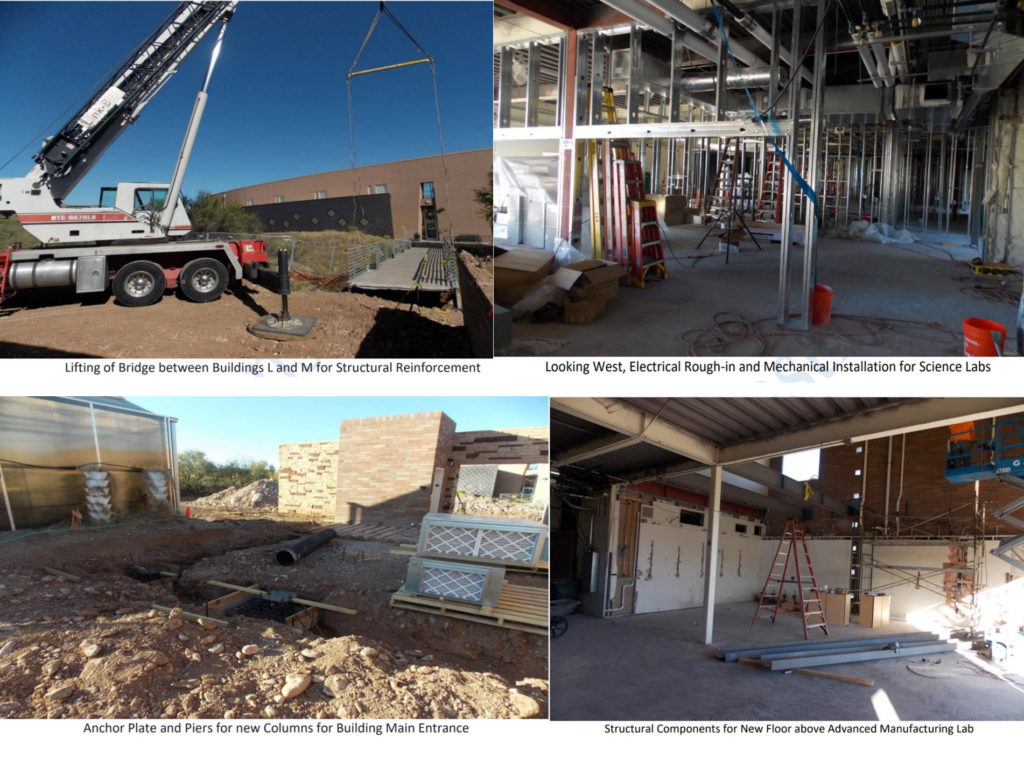
Source: Yavapai College Facilities Management News, November 2019 (all photos from that newsletter). Click here to view newsletter.
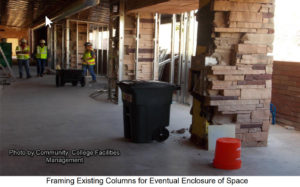 nd approved by the fire marshal, lot 10 will be available for more parking.”
nd approved by the fire marshal, lot 10 will be available for more parking.”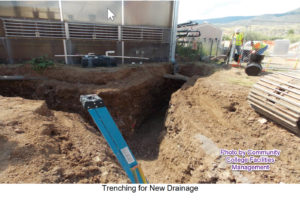
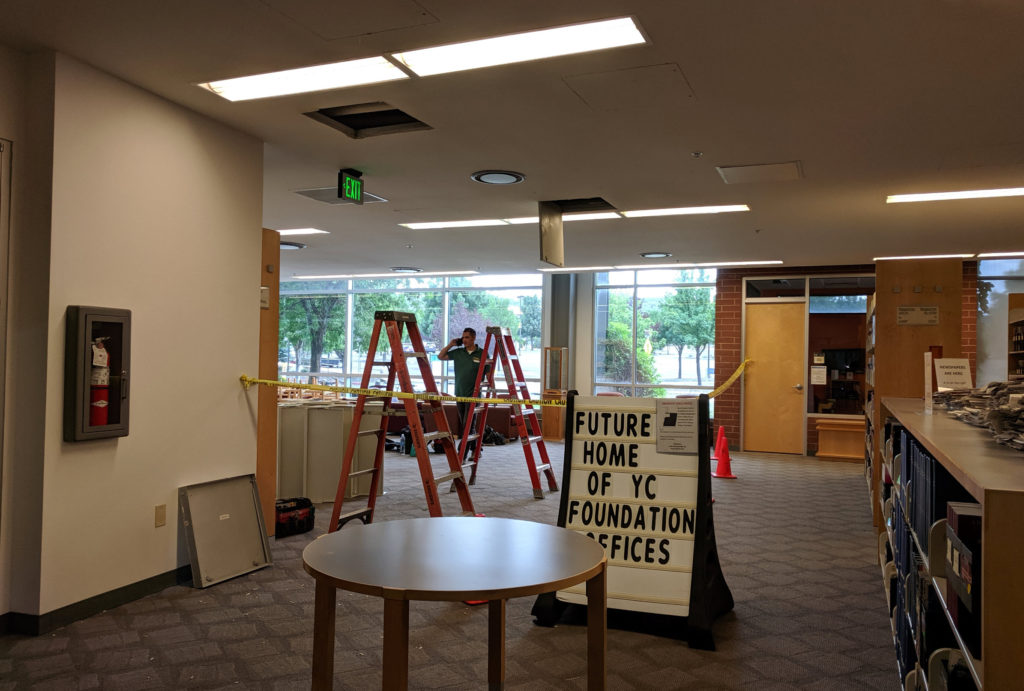
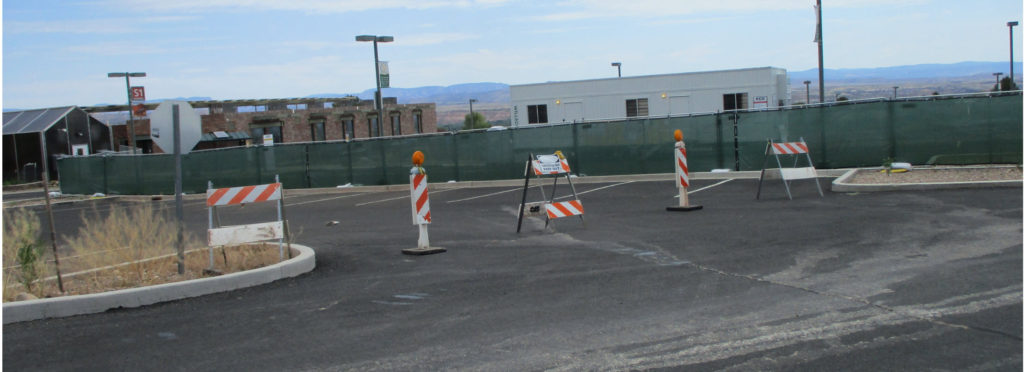
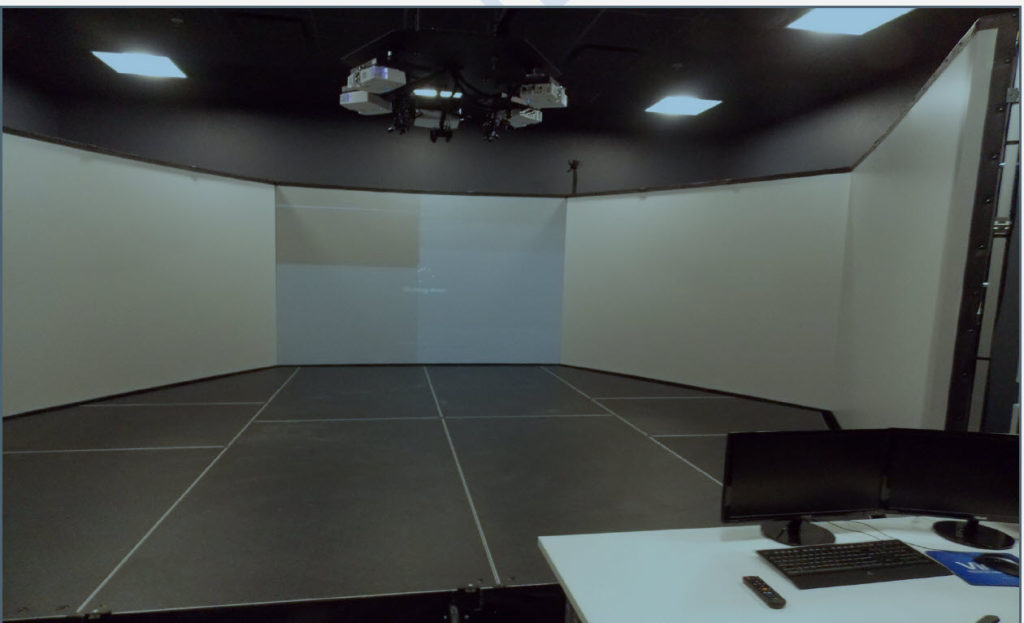
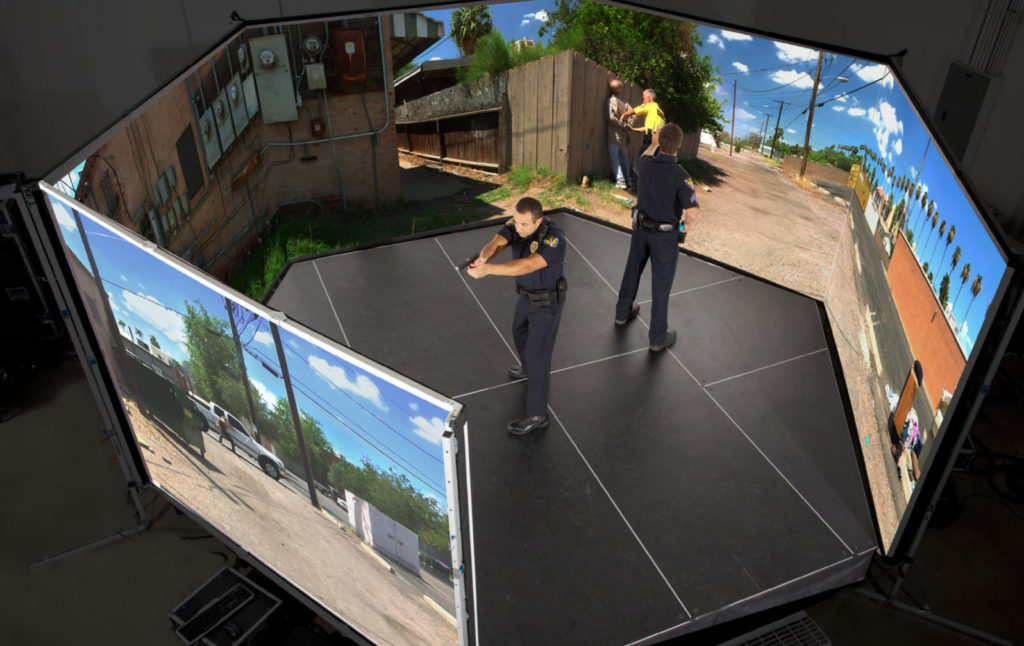
 The new training facility for the Northern Arizona Regional Training Academy (NARTA) on the Prescott Campus is nearing completion. The total cost to taxpayers associated with moving NARTA from the Prescott Valley Center to the Prescott Campus is put at $2,037,000. Taxpayers are picking up the entire cost of the transfer because no grant money is involved.
The new training facility for the Northern Arizona Regional Training Academy (NARTA) on the Prescott Campus is nearing completion. The total cost to taxpayers associated with moving NARTA from the Prescott Valley Center to the Prescott Campus is put at $2,037,000. Taxpayers are picking up the entire cost of the transfer because no grant money is involved.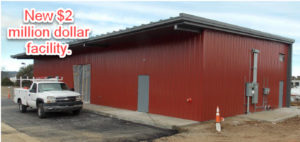 The Prescott Valley Chief of Police, Bryan Jarrell and the Prescott Chief of Police, Debora Black, both heavily lobbied the Governing Board at the March 2018 meeting for the project. The Board voted 4-1 to spend the $2 million with Second District Representative Deb McCasland the lone dissenter. She argued that while she strongly supported the NARTA program, she did not see that this was a wise expenditure of scarce educational funds.
The Prescott Valley Chief of Police, Bryan Jarrell and the Prescott Chief of Police, Debora Black, both heavily lobbied the Governing Board at the March 2018 meeting for the project. The Board voted 4-1 to spend the $2 million with Second District Representative Deb McCasland the lone dissenter. She argued that while she strongly supported the NARTA program, she did not see that this was a wise expenditure of scarce educational funds.  Poor building “L.” Has it become the Rodney Dangerfield of Yavapai Community College? Rodney once joked: “I get no respect at all – When I was a kid, I lost my parents at the beach. I asked a lifeguard to help me find them. He said, `I don’t know kid, there are so many places they could hide'”.
Poor building “L.” Has it become the Rodney Dangerfield of Yavapai Community College? Rodney once joked: “I get no respect at all – When I was a kid, I lost my parents at the beach. I asked a lifeguard to help me find them. He said, `I don’t know kid, there are so many places they could hide'”.  The new training building for the Northern Arizona Regional Training Academy (NARTA) is under construction on the Prescott Campus. Recall that President Wills announced at the March 2018 Governing Board meeting that the administration had finalized plans to move NARTA from the Prescott Valley Center, where it has been located since 1996, to the Prescott Campus.
The new training building for the Northern Arizona Regional Training Academy (NARTA) is under construction on the Prescott Campus. Recall that President Wills announced at the March 2018 Governing Board meeting that the administration had finalized plans to move NARTA from the Prescott Valley Center, where it has been located since 1996, to the Prescott Campus. 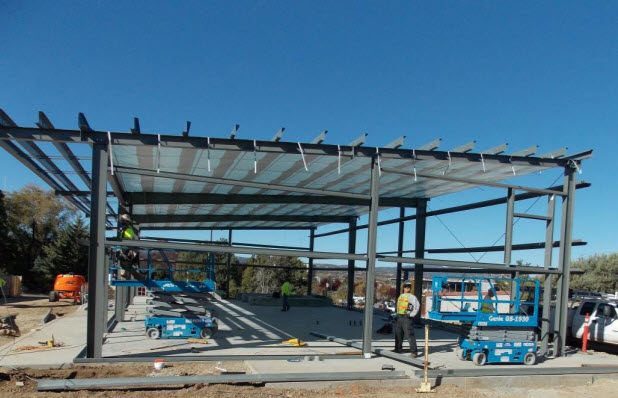
 With more than $2 million already spent in the overall improvements of the first floor of the Prescott Valley expansion, the College is completing the second floor. The estimated cost for the second floor renovation/construction is around $1.57 million. As of the November Governing Board meeting, furniture is being installed along with technology on the second floor.
With more than $2 million already spent in the overall improvements of the first floor of the Prescott Valley expansion, the College is completing the second floor. The estimated cost for the second floor renovation/construction is around $1.57 million. As of the November Governing Board meeting, furniture is being installed along with technology on the second floor.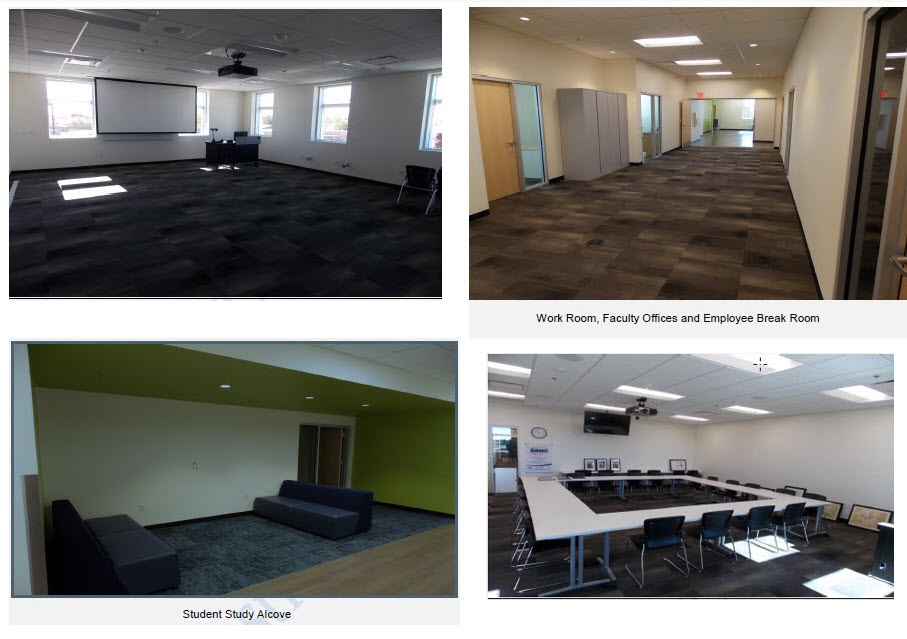
 A fully operational indoor ambulance teaching laboratory has been added to the growing list of unique and advanced training tools now available to Yavapai College EMS students on the Prescott Campus. Described by the College as “complete with flashing lights, the ambulance lab on the second floor of Building 2 . . . is bolstering the college’s efforts to provide the most realistic training possible to future first responders.”
A fully operational indoor ambulance teaching laboratory has been added to the growing list of unique and advanced training tools now available to Yavapai College EMS students on the Prescott Campus. Described by the College as “complete with flashing lights, the ambulance lab on the second floor of Building 2 . . . is bolstering the college’s efforts to provide the most realistic training possible to future first responders.”